North Coast Land Conservancy occupies half of the top floor of a two-story office building on US Highway 101 at the north end of Seaside. It happens to look out over the Necancum Estuary, where Neawanna and Neacoxie creeks meet and become part of the Necanicum system. Here the creeks’ footprint spreads out, as freshwater mingles with saltwater at high tide, just before entering the Pacific Ocean between Seaside and Gearhart. As photographer Neal Maine points out, the estuary is a public resource, one utilized by an unending parade of Oregonians and visitors: two-legged, four-legged, finned and winged.
The estuary has long been a special area of focus for NCLC, which also protects land as part of the public trust. NCLC’s protection of the lands lining the Necanicum gradually spread upstream. All of it is now part of the Necanicum Wildlife Corridor Conservation Initiative. Here Neal shares photographs and observations he has gathered through the seasons down in the estuary, right outside NCLC’s west-facing windows. “Everything is out there,” he says. “So much drama, all these interactions in that small space.”

White egret preening in the saltmarsh in front of the Java Reef coffee stand. Egrets are fall visitors, not always welcomed by the local year-round great blue herons …

… which aren’t keen on the competition.
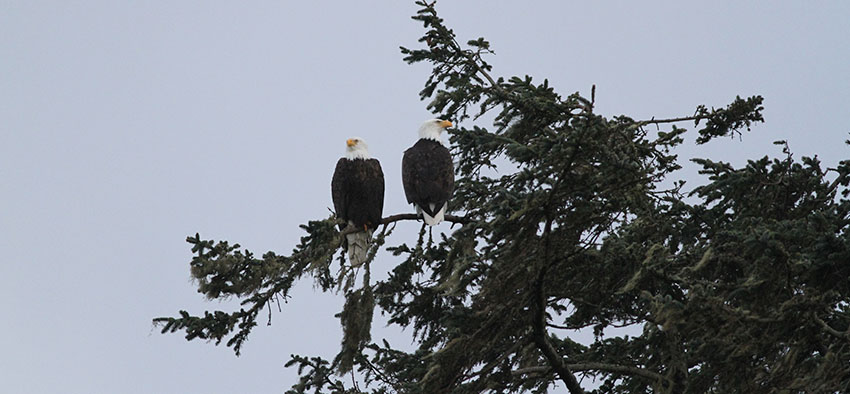
Pair of bald eagles perches in Sitka spruce on NCLC’s Neawanna Point Habitat Reserve.
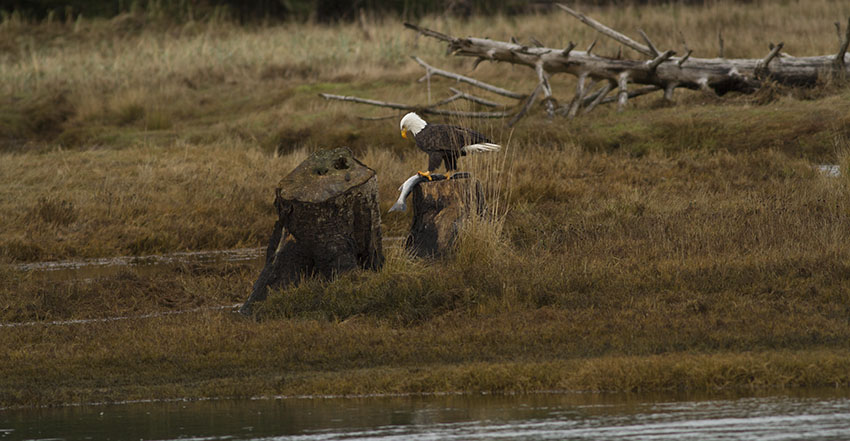
Watch the saltmarsh and you’ll see, as Neal puts it, “the grand cycle of nature being played out,” such as in this bald eagle taking apart an adult coho salmon it just plucked from the estuary.

Elk rest in the same vicinity where Neal photographed both eagles–right across the rain-covered highway from the land trust office.

Male hooded merganzer snapped between flying and paddling in the estuary.

Surf scoters, characterized by that distinctive beak, are typically seen bobbing among the waves on the surfline. But they also enter the estuary to feed, especially in winter–as they have here.
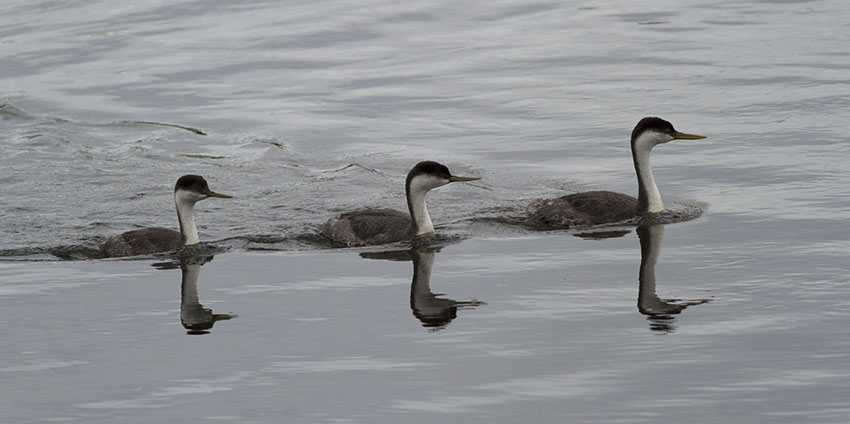
A line of western grebes is a fairly common sight in the estuary.

Kingfishers perch on the telephone lines along the highway right above where Thompson Creek spills through a culvert into Neawanna Creek on its way to the estuary. From there they spot their prey and dive. Look closely: that’s a coho salmon smolt in its mouth.
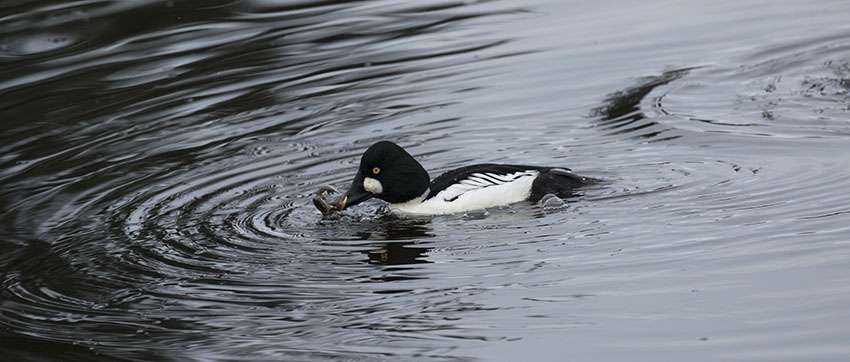
Three or four common goldeneye males typically winter in the estuary, where they feed exclusively on crab, according to Neal’s observations. “They dive down for the crab, bring one up, beat the tar out of it, and swallow it whole.”
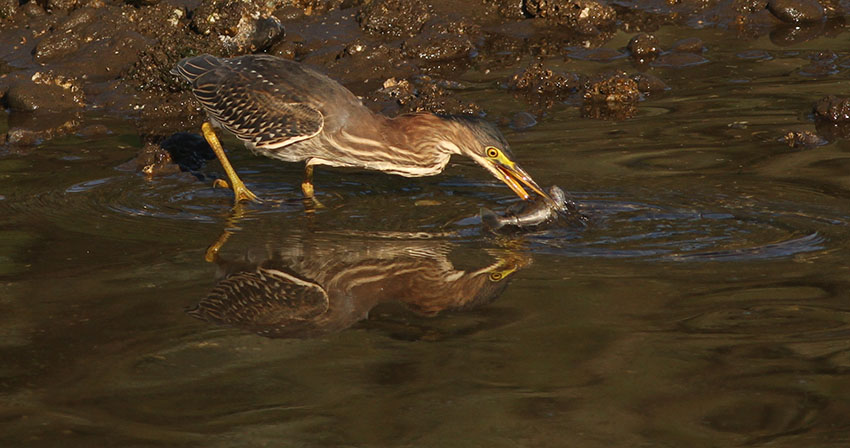
It might all look the same, but the estuary is a mix of different microhabitats. Such as this gravel bar, where a green heron is successfully hunting. “When you have a change in habitat,” Neal says, “you have different critters come in and fish that habitat.”
Comments